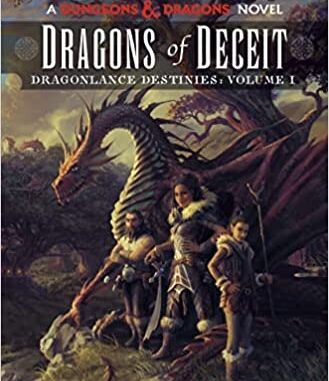
In the “Roleplaying Products You Didn’t Know You Were Missing” series, I talk about products that don’t appear in the world of roleplaying games as well as under- serviced aspects of gaming.
In this article, I’ll talk about one of the most valuable yet varied tools publishers used to utilize to support their lines of games: Fiction. At one time, tabletop roleplaying games were as synonymous with lines of fiction books as they were with in-house magazines. Both supported the core gaming line, however, over time both died off. But should they still be dead? Is it time for lines of RPG based fiction to return? In the first part of this three-part series, I’ll look at what the prose might be and how it should look in the new paradigm.
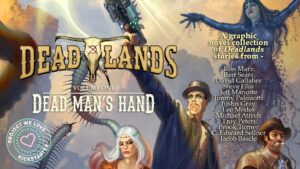 I chose the word “varied” when describing publishers creating lines of fiction because their results were varied. Some created great, world-enhancing lines. However, others produced products of varied quality and tenuous involvement of the core metastory that drove these worlds. Because of that, fan support for these products varied widely.
I chose the word “varied” when describing publishers creating lines of fiction because their results were varied. Some created great, world-enhancing lines. However, others produced products of varied quality and tenuous involvement of the core metastory that drove these worlds. Because of that, fan support for these products varied widely.
If you’re a tabletop roleplaying fan from the 1980s and 1990s then you probably remember the massive Dungeons & Dragons fiction lines featuring each of their worlds while describing iconic characters. White Wolf achieved a huge number of books for the World of Darkness. Shadowrun, Battletech, and many more either dipped their toes into prose fiction or cannonballed into the concept, producing voluminous numbers of novels. Overwhelmingly, these books were pulp novels that will not withstand the cruelty of time. Still, many of these dime novels remain beloved first encounters with tabletop roleplaying worlds.
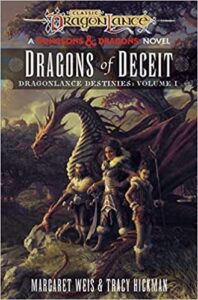 Today, lines of fiction, those early staples of the industry, have mostly evaporated. Wizards of the Coast still does some RA Salvator Drizz’t hardcovers while Margaret Weis and Tracy Hickman had to sue to get their Dragonlance novel out. Onyx Path Publishing (OPP) publishes flash fiction throughout their Chronicles of Darkness rulebooks. In addition, OPP offers anthologies as stretch goals during many of their crowdfunding campaigns. Green Ronin has an imprint for their fiction, Nisaba Press. Pinnacle Entertainment has an active Deadlands comic book license rolling. Paizo continues to produce fiction; in fact I’ve quoted one of their freelance authors twice on the subject (here and here). Despite those examples, by and large, the lines of pulp novels and comics are a product of a bygone era in gaming. Their numbers have fallen from entire shelves at the bookstore to Kickstarter stretch goals. Why? Because novels are expensive to produce and can’t be sustained as loss leaders like they were in the past.
Today, lines of fiction, those early staples of the industry, have mostly evaporated. Wizards of the Coast still does some RA Salvator Drizz’t hardcovers while Margaret Weis and Tracy Hickman had to sue to get their Dragonlance novel out. Onyx Path Publishing (OPP) publishes flash fiction throughout their Chronicles of Darkness rulebooks. In addition, OPP offers anthologies as stretch goals during many of their crowdfunding campaigns. Green Ronin has an imprint for their fiction, Nisaba Press. Pinnacle Entertainment has an active Deadlands comic book license rolling. Paizo continues to produce fiction; in fact I’ve quoted one of their freelance authors twice on the subject (here and here). Despite those examples, by and large, the lines of pulp novels and comics are a product of a bygone era in gaming. Their numbers have fallen from entire shelves at the bookstore to Kickstarter stretch goals. Why? Because novels are expensive to produce and can’t be sustained as loss leaders like they were in the past.
But should they be? Should TTRPG based fiction simply remain fodder at used book stores or should it return to being a standard part of roleplaying games? If it were to come back, what would it look like?
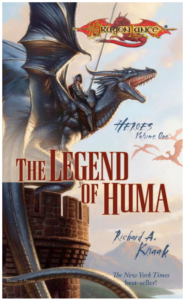 To figure that out, let’s start with author Richard A. Knaak. For those that don’t know his work, he is one of the most important authors from the early days of Dragonlance. His work on The Legend of Huma and Kaz the Minotaur are Dragonlance staples. During the time between 1e/2e and the launch of 5e, he crafted a number of minotaur-centric Dragonlance tales and Pathfinder, as well as adaptations for The Flash, World of Warcraft, Diablo, and more. During those decades, he kept his original series, Dragonrealms, going while penning other works. With the launch of 5e, he partnered with Phil Beckwith and Micah Watt to adapt his original series, Rex Draconis for tabletop (both 5e and Pathfinder 1e). The novels are an homage to Dragonlance, acting as a spiritual successor for the [at the time] dormant fiction line. Kickstarted into being, these books exposed new fans to his setting and opened up a new avenue for Mr. Knaak to reach his audience.
To figure that out, let’s start with author Richard A. Knaak. For those that don’t know his work, he is one of the most important authors from the early days of Dragonlance. His work on The Legend of Huma and Kaz the Minotaur are Dragonlance staples. During the time between 1e/2e and the launch of 5e, he crafted a number of minotaur-centric Dragonlance tales and Pathfinder, as well as adaptations for The Flash, World of Warcraft, Diablo, and more. During those decades, he kept his original series, Dragonrealms, going while penning other works. With the launch of 5e, he partnered with Phil Beckwith and Micah Watt to adapt his original series, Rex Draconis for tabletop (both 5e and Pathfinder 1e). The novels are an homage to Dragonlance, acting as a spiritual successor for the [at the time] dormant fiction line. Kickstarted into being, these books exposed new fans to his setting and opened up a new avenue for Mr. Knaak to reach his audience.
The history of Richard A. Knaak illustrates that, while publishers stopped producing RPG related novels, many of the authors kept on writing and their fanbases kept on buying. While it’s a limited sample size, it does point towards a collection of writers and topics that the world is ready to embrace for a comeback. Assuming it is, what form would it take?
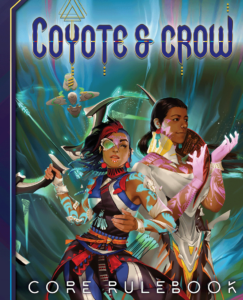 Coyote & Crow is the first project I think of for an RPG that needs a line of fiction support. Coyote & Crow is a million dollar RPG Kickstarter created by a team of Natives, this sci-fi setting features superpowers in an uncolonized near-future America. This world is empowering for Natives and fun for all types of players. That said, this world needs more. Not just more gaming content, but fiction from Natives that speaks to the possibilities of this type of science fiction. This project offers a world in which these stories need to be told. An open submission specifically for Native authors willing to write for this world is likely to find a talent, yet under represented collection of authors. If Coyote & Crow offered a fiction line, it would be a great addition to their work.
Coyote & Crow is the first project I think of for an RPG that needs a line of fiction support. Coyote & Crow is a million dollar RPG Kickstarter created by a team of Natives, this sci-fi setting features superpowers in an uncolonized near-future America. This world is empowering for Natives and fun for all types of players. That said, this world needs more. Not just more gaming content, but fiction from Natives that speaks to the possibilities of this type of science fiction. This project offers a world in which these stories need to be told. An open submission specifically for Native authors willing to write for this world is likely to find a talent, yet under represented collection of authors. If Coyote & Crow offered a fiction line, it would be a great addition to their work.
Sine Nomine Publishing’s Worlds Without Number and Stars Without Number await fiction. These books have a great fanbase and it’d be worth the effort of tapping into them to see if they want to experience the settings as more than a game. While WWN and SWN’s base is eager to follow each new rulebook, I’d love to see a pilot piece of prose, something to take the beauty of those settings in a narratively realized direction.
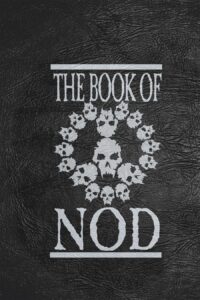 There are three RPGs that demand fiction, that are waiting for their stories to be told. But these aren’t meant for simple full justified blocks of text on a screen or print, these have to be in the vein of White Wolf’s The Book of Nod. Nod was not a simple book of prose but an artifact laid out to look like the poetry and prose publication of an inspired believer, an inspired believer who was a vampire. Deciding on the layout was the first thought and it informed all other considerations. Layout then the art then the words; all set to serve the presentation, yet none of it felt forced. The book shared details, art, and unreliable narration with the audience, capturing the feel of the world it meant to devour.
There are three RPGs that demand fiction, that are waiting for their stories to be told. But these aren’t meant for simple full justified blocks of text on a screen or print, these have to be in the vein of White Wolf’s The Book of Nod. Nod was not a simple book of prose but an artifact laid out to look like the poetry and prose publication of an inspired believer, an inspired believer who was a vampire. Deciding on the layout was the first thought and it informed all other considerations. Layout then the art then the words; all set to serve the presentation, yet none of it felt forced. The book shared details, art, and unreliable narration with the audience, capturing the feel of the world it meant to devour.
Using The Book of Nod as our guidepost, imagine prose support for MÖRK BORG, Mothership, and CY_BORG. Those RPG books are known for their beautiful layouts, intuitive means of conveying information, and a grimdark feel that electrifies each session. If the essence of those lines could be distilled and printed as prose, given narrative form to their dark journeys, they would be magic books. It might spark a publishing revolution.
HOW WOULD THIS WORK?
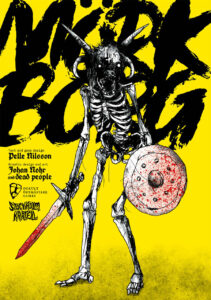 In the next part of this three-part article, I’ll look at how these projects might work. Beyond the tempting products, how should they be marketed, produced, and sold. Check out the next column as we look at this from the publisher’s point of view as well as the author’s. If fiction lines were to come back, what RPGs would you like to see novels based upon?
In the next part of this three-part article, I’ll look at how these projects might work. Beyond the tempting products, how should they be marketed, produced, and sold. Check out the next column as we look at this from the publisher’s point of view as well as the author’s. If fiction lines were to come back, what RPGs would you like to see novels based upon?
I wrote a few paragraphs for one of the Rex Draconis RPG books. Egg Embry participates in the OneBookShelf Affiliate Program, Noble Knight Games’ Affiliate Program, and is an Amazon Associate. These programs provide advertising fees by linking to DriveThruRPG, Noble Knight Games, and Amazon.
Latest posts by Egg Embry (see all)
- New Gamemaster Month 2023 - January 20, 2023
